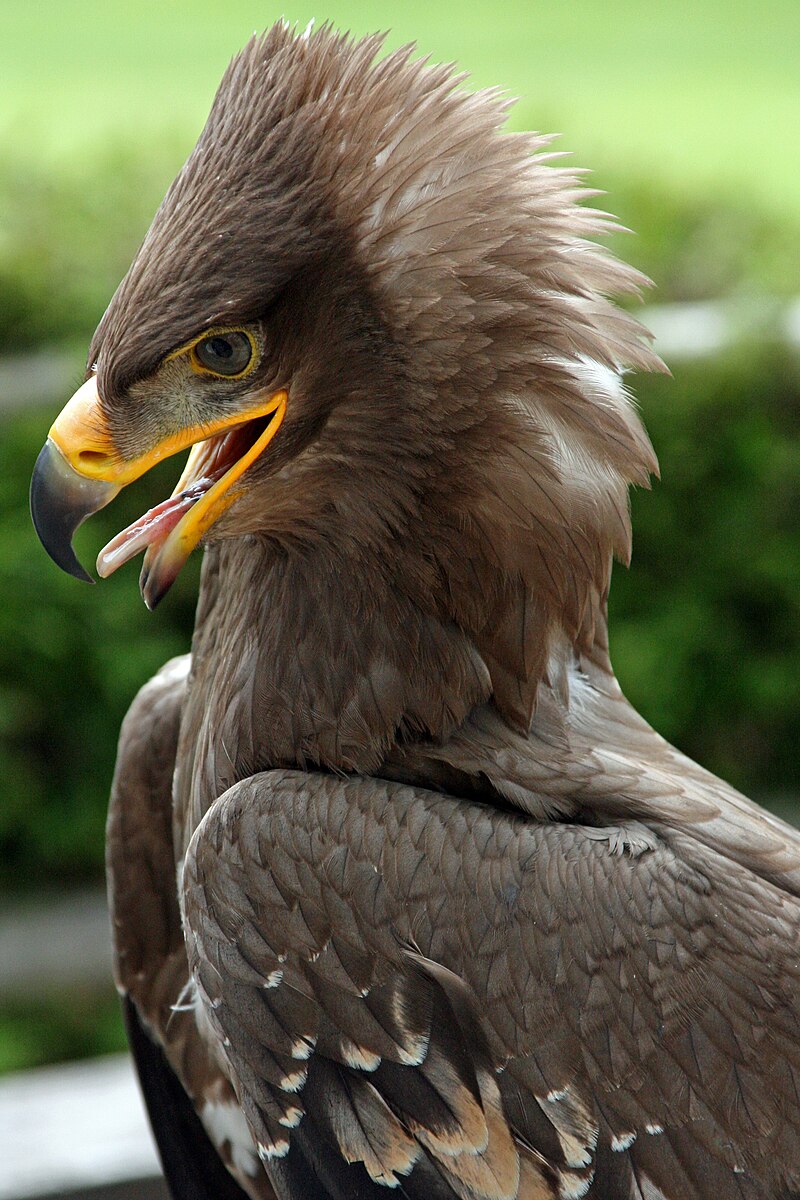Steppe Eagles are diurnal birds of prey, meaning they are active during the day and rest at night. These majestic raptors are not known to hunt at night, as they rely on their keen eyesight and soaring abilities to locate and capture their prey, which is primarily active during daylight hours.
The Hunting Habits of Steppe Eagles
Steppe Eagles are opportunistic hunters, feeding on a variety of small-sized mammals, birds, reptiles, insects, and carrion. During the breeding season, they specialize in hunting ground squirrels, while in non-breeding times, they may take advantage of insect swarms, semi-altricial young of various animals, landfills, and carrion.
Daytime Hunting
Steppe Eagles are well-adapted to hunt during the day, with their excellent eyesight and ability to soar high in the sky, scanning the ground for potential prey. They use a combination of active hunting, where they actively search for and pursue their prey, and passive hunting, where they wait patiently for an opportunity to strike.
Nocturnal Inactivity
There is no substantial evidence or research suggesting that Steppe Eagles hunt at night. These birds are known to be diurnal, meaning they are active during the day and rest at night. Their hunting strategies and adaptations are primarily suited for daytime activities, and they do not possess the specialized features, such as enhanced night vision, that would enable them to effectively hunt in the dark.
Migratory Behavior and Feeding Habits
 Image source: Steppe Eagle by Fimb
Image source: Steppe Eagle by Fimb
Steppe Eagles are migratory birds, traveling long distances between their breeding and wintering grounds. During their migrations, they often form large flocks, sometimes numbering more than a hundred birds, and may associate with other raptors, such as Black Kites and Lesser Spotted Eagles.
Feeding Adaptations
Steppe Eagles have evolved to be efficient hunters, with sharp talons, hooked beaks, and keen eyesight that allow them to locate and capture their prey with precision. They are known to be opportunistic feeders, taking advantage of a wide range of food sources, including:
- Small-sized mammals (e.g., ground squirrels, hares, voles)
- Birds (e.g., waterfowl, gamebirds, passerines)
- Reptiles (e.g., snakes, lizards)
- Insects (e.g., grasshoppers, beetles)
- Carrion (e.g., dead animals, landfills)
This diverse diet helps Steppe Eagles adapt to different environments and ensure their survival throughout the year.
Ecological Importance of Steppe Eagles
Steppe Eagles play a crucial role in their environment as top predators, helping to control the populations of their prey animals and maintain a balance in the ecosystems where they live. They are also considered an umbrella species, meaning that conserving them can benefit many other species that share their habitat.
Conservation Challenges
Unfortunately, Steppe Eagles face significant threats, primarily due to habitat loss from the conversion of steppe habitat into agricultural fields, collisions with power lines, and human persecution. As a result, the Steppe Eagle is classified as an Endangered species, with populations experiencing major declines over the past few decades.
Conclusion
In conclusion, Steppe Eagles are diurnal birds of prey that do not hunt at night. They are well-adapted to hunt during the day, using their keen eyesight and soaring abilities to locate and capture a variety of small-sized prey. While they face significant conservation challenges, Steppe Eagles play a vital role in their ecosystems as top predators and an umbrella species, making their protection and conservation efforts crucial for the preservation of biodiversity.
References:
– Oiseaux-Birds.com – Steppe Eagle
– Wikipedia – Steppe Eagle
– The Peregrine Fund – Steppe Eagle
– Animalia.bio – Steppe Eagle
– European Raptors – Steppe Eagle

